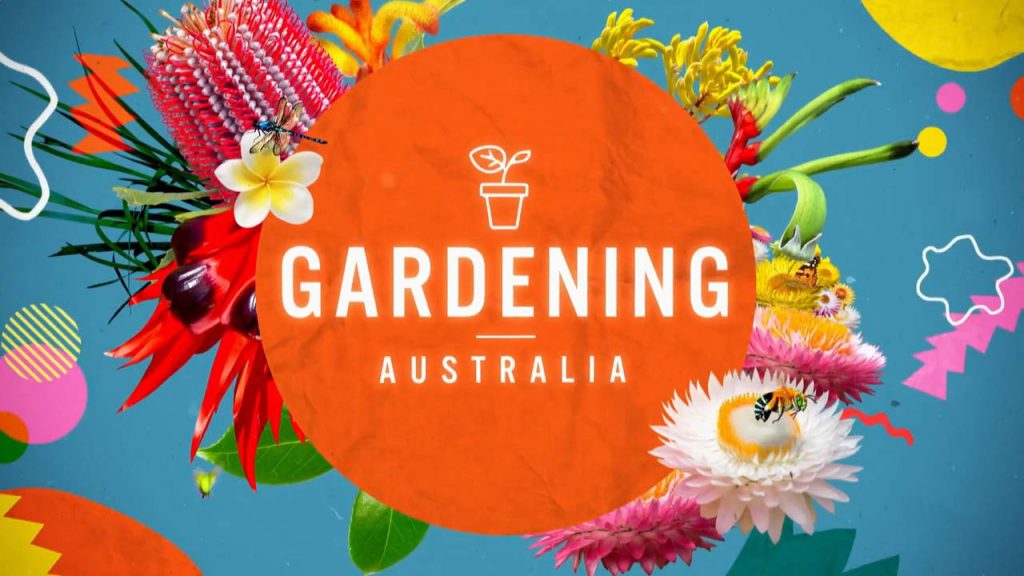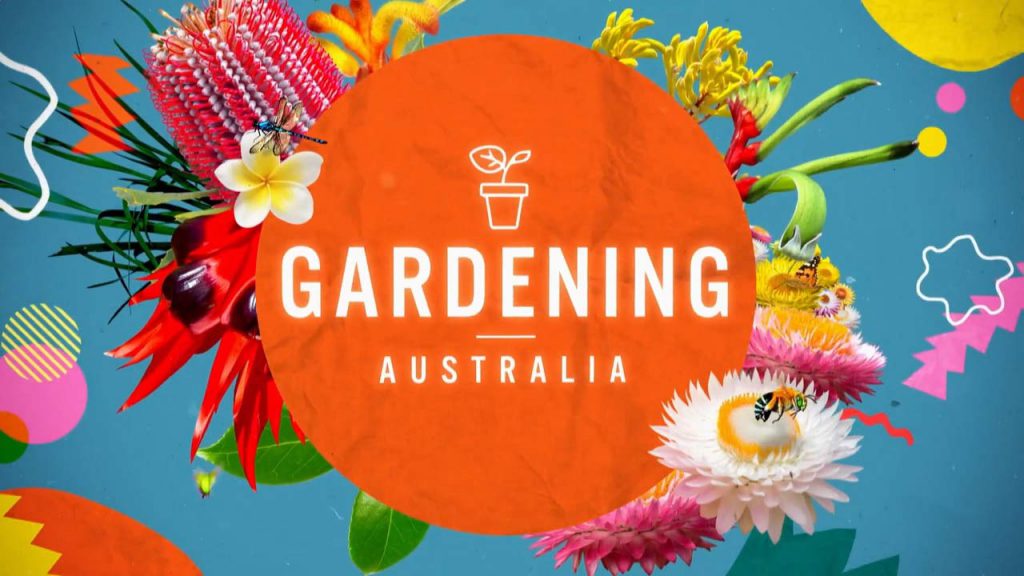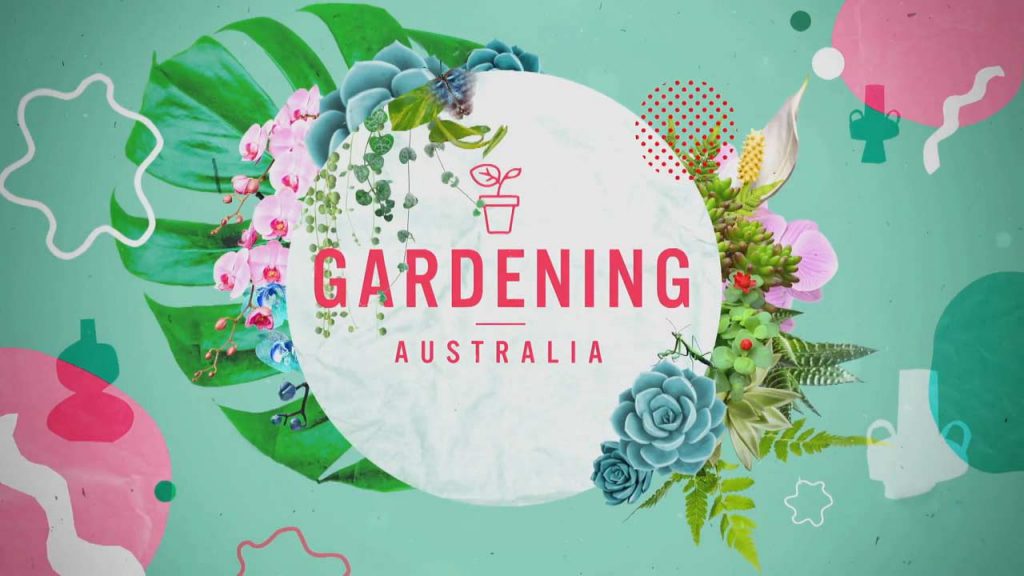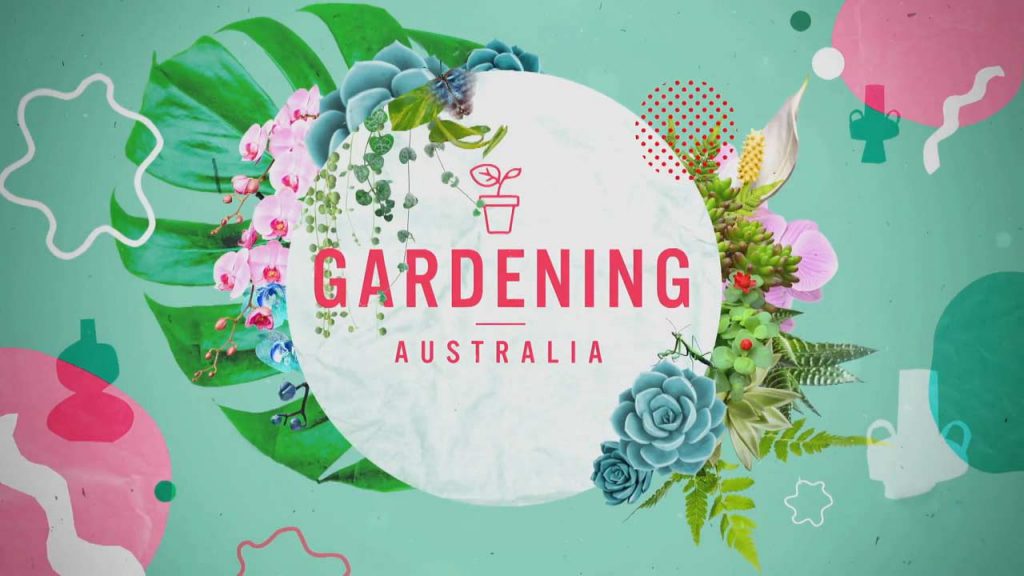Gardening Australia episode 30 2023 – Embarking on a captivating journey filled with nature’s wonders, Jerry leisurely strolls through an enchantingly exotic tropical garden, soaking in the rich, verdant tapestry of rare flora that whispers the secrets of far-off lands. In a different slice of paradise, Josh sets out on an intellectually stimulating quest, delving deep into the mystical world of magpies, unraveling the layers of folklore and science that surround these enigmatic birds. Parallelly, Millie’s visit to a nurturing school farm serves as a heartening testament to the future of agriculture, fostering a symbiotic relationship between nature and next-generation learners, enlightening young minds on the cycles of life that sustain us.
In her realm of botanical alchemy, Jane embarks on a colorful odyssey exploring innovative and artistic avenues to suffuse gardens with a symphony of colors, her ideas blooming like flowers to inspire garden enthusiasts to create their own vibrant edens. In a harmonious blend of functionality and aesthetic charm, Clarence painstakingly constructs a unique seating circle, an inviting haven envisioned to be the social heart of garden soirees, encouraging communal experiences and the sharing of stories under the open sky.
Completing this inspirational ensemble, we’re introduced to a visionary ceramicist. Drawing from the subtle elegance of native seedpods, this artist channels their intricate beauty into stunning ceramic pieces, each a tribute to the awe-inspiring complexity and diversity of our natural world. This profound journey from the soil to the stars speaks volumes about our intrinsic connection to the very fabric of the environment.
Gardening Australia Episode 30: A Tour of Tropical Paradise and Colorful Inspiration
Jerry Visits a Stunning Subtropical Garden in Brisbane
Tucked away just 20 kilometres southwest of Brisbane lies a hidden tropical paradise. This 2 hectare property is the life’s work of home gardener Isabelle Sommer, who has spent the past 50 years cultivating her dream garden.
When Isabelle and her late husband Walter first purchased the property in 1974, it was mainly bare land covered in soapbush, lantana, and large gum trees. The soil was extremely poor – just hard shale bedrock. But with years of persistence, imagination, and sheer hard work, Isabelle has transformed the space into a subtropical wonderland.
Across the sprawling gardens, Isabelle has curated a world-class plant collection. She has over 50 species of orchids artfully mounted on tree trunks. Countless bromeliads, with their geometric foliage, add vibrant structure. Her meadows are dotted with rare palms and majestic Timor pines rising into the canopy. There are drifts of clumping bamboo, rows of fragrant frangipanis, and lush borders of bulbous tapeinosoma.
At the heart of the property lies a large ornamental lake, fringed by monstrous Xanthorrhoeas and beds of delicate impatiens. Isabelle even built a thatched hut overlooking the water, reminiscent of her childhood in New Guinea. It’s a sanctuary complete with fruiting orchards, vegetable patches, and shaded alcoves for lounging. This is truly Isabelle’s masterpiece.
But transforming the gardens took immense patience and care. Faced with impenetrable shale bedrock, Isabelle realized the only way forward was to improve the soil through organic matter. She spread truckloads of mulch, newspaper, grass clippings across the land until, inch by inch, the earth was viable enough for plants to thrive. Even with poor drainage, certain moisture-loving species could cope in low-lying areas, while others were elevated in free-draining beds.
Isabelle focused first on establishing structure by planting hardy trees to provide shade and sculpt the landscape. Once mature, they formed the backbone enabling everything else to flourish. With such unhealthy soil, many plants struggled at first. But as conditions improved over time, the gardens evolved into the bountiful botanical haven seen today.
After 50 years gardening in Brisbane’s humid subtropics, Isabelle has cultivated a paradise brimming with life. It’s a testament to her creative vision and persistent care in challenging conditions. For any gardener facing difficult sites, Isabelle’s oasis offers inspiration to see the long-term potential. With an intimate understanding of plants’ needs, and a willingness to work alongside nature’s rhythms, we can achieve beautiful gardens even in unforgiving environments.
Josh Investigates the Complex Lives of Suburban Magpies
The warbling song of magpies greets many Australians at dawn. These intelligent birds are a ubiquitous presence across the country, readily adapting to our parks and backyards. But despite their familiarity, there’s still much to uncover about magpies and their social world.
In Perth, a dedicated team of researchers are revealing fascinating insights into local magpie populations. Led by Associate Professor Mandy Ridley, the group closely observes and monitors magpies around Perth. Each individual is identified by colored leg bands, allowing long-term studies of behavior and family dynamics.
One key finding is that Perth magpies live in cooperative family groups all year round. This continuous social structure is unique among Australia’s subspecies. Magpies also have strong individual personalities that become apparent with regular encounters. Some are bold and interactive, seeking out contact with humans. Others are more cautious, keeping their distance. But all magpies exhibit signs of intelligence like curiosity, playfulness and quick problem-solving abilities.
The research explores how cooperative rearing of chicks influences cognitive performance. Early results show magpies that score higher in tests of associative learning are better at responding appropriately to threats like loud noise. So higher cognition may help counteract stresses from urbanization.
More discoveries are still being made, but the outlook for Perth magpies is concerning. Although a common sight, their breeding rates are low with few juveniles surviving to adulthood. As mature birds eventually die off, populations could rapidly decline without new recruits. The urban environment likely impairs nesting success due to factors like light and noise pollution, habitat loss, and climate change pressures like heatwaves.
As Mandy describes, magpies are experiencing a “silent decline” not yet visible. But we can support local populations through thoughtful garden practices. Providing reliable water sources, areas of dense shade, and improvements like minimal night lighting will encourage more successful breeding. Boosting soil health enables magpies to forage for food. Retaining safe nesting trees and thickets gives shelter. And planting year-round nectar sources can help provision chicks. With care and understanding, our gardens can sustain magpies far into the future.
Millie Visits an Award-Winning School Farm Cultivating Young Gardeners
In the industrial west of Melbourne lies an unexpected oasis – the Footscray City College farm. Surrounded by concrete and asphalt, this 1 acre site has nurtured generations of student gardeners since the 1980s. Now the program is busier than ever, with workplace horticulture courses, a booming nursery, and acres of edible gardens.
For teacher Jack Dunston, the farm’s mission is giving students practical skills to enter horticulture pathways. Alongside classroom learning, students work hands-on in the gardens doing everything from propagation to carpentry. They grow food for themselves and the school canteen, run a thriving nursery, build garden infrastructure, and complete accredited training. It’s a living classroom like no other in the area.
The results are impressive. A Hydroponic greenhouse overflows with lettuces and herbs. Students tend seedlings in the propagation house. Others learn grafting and pruning in the orchard or develop irrigation systems. Everyone hones their skills while producing food for the community. When they move on from school, many begin horticulture apprenticeships or related careers.
With its rich history, the farm belongs to more than just current students. Past generations also invested their energy on the land, and today’s youth feel a responsibility to maintain that legacy. Volunteer work is common as everyone pitches in to care for the space. By giving students meaningful hands-on experiences, the farm fosters a genuine love of horticulture and empathy for the environment. It’s a unique school community bringing together young people and growing plants to shape the future.
Jane Finds Ways to Sustain Color Through the Year
Vibrant blooms are a hallmark of summer gardens. From riotous perennials to sizzling tropicals, this season delivers an explosion of color. But when winter’s chill sets in, many resign themselves to a more subdued plant palette. For a dreary landscape, color seems fleeting. However, with smart design choices, we can sustain beauty across the seasons.
A permanent perennial border makes an ideal anchor. Evergreens like lavender and rosemary offer foliage interest, while repeated flowering types like Marguerite daisies and foxgloves refresh displays. Underplanting bulbs produces spring surprises, and leaving seed heads gives winter architecture. This layered structure ensures year-round Bones.
Beyond the border, look to pots and annuals. Windowsill African violets or indoor orchids give winter joy. And fast-growing seeds allow us to plug gaps or trial experimental hues. Don’t overlook edible plants either. From black kale to rainbow chard, many vegetables provide exotic colors for our palate and landscape.
With summer now in full swing, keep deadheading spent blooms to prolong flowering. And resist cutting back herbaceous plants entirely. Leave foliar structure for winter silhouettes and provide seeds or shelter for wildlife. A garden is never static. By harmonizing with natural rhythms, we can craft rich, evolving color stories through every season.
Clarence Constructs a Backyard Seating Circle
Nestled amidst Clarence’s rambling cottage garden is a newly completed seating circle. Built around a rustic fire pit, it’s now a focal spot to relax outdoors with family and friends. The project integrates beautifully into the surrounding plantings.
The initial site was a low-lying area of poor drainage that frequently flooded. Rather than change the landform, Clarence designed a “rain garden” showcasing water-loving species. Moisture-tolerant natives like lomandra, billy buttons and carex now flourish. Council was also redirected into decorative gravel trenches which channel excess water away safely.
With the fundamentals established, it was time to sculpt the social space. Log rounds from a fallen gum tree were repurposed as stools, and local sandstone blocks edged the fire pit. Brick paving lined the paths for all-weather access, while raised garden beds were sunk at the perimeter. These tricks lifted seating above soggy ground.
The plant palette harmoniously complements the area’s relaxed mood. Grasses and small trees filter views while allowing light through. Bronze-tinted flax lilies shimmer near the fireplace. And underplanted succulents and herbs give a Mediterranean ambience. Each addition was carefully placed to enhance the social feel. It’s a cozy, inviting circle to unwind and enjoy the garden’s beauty.
This backyard makeover honors nature’s constraints while creating a practical space for gathering. With thoughtful plant choices and some salvaged materials, Clarence turned a problem zone into a peaceful oasis. It reflects his guiding gardening ethos – work alongside the land’s needs and let the plants shine.
A Ceramic Artist Finds Inspiration in Australian Seedpods
Strolling through the Western Australian bush, ceramicist Sarah Kuehl admires the exquisite details that surround her. The unique native flora has been a profound inspiration for Sarah’s sculptural works celebrating the Australian landscape.
Originally from England, Sarah fell in love with Australia’s vivid light and textures while backpacking here in her youth. She was drawn to the abstract, sculptural forms of WA’s extraordinary plants and seedpods. After graduating in ceramics, she settled in rural Bridgetown. Surrounded by pristine bushland, her artwork vividly captures the energy and beauty she witnesses in nature.
Sarah’s sculptural process reflects her environmental ethos. Her home studio is hand-built from recycled and upcycled materials. Clay is locally resourced. And the finishing technique involves “raku” wood-firing, creating carbon effects reminiscent of bushfires. Through her art, Sarah hopes to reflect nature’s patterns, distilling the landscape’s raw essence into ceramic sculptures.
The resulting pieces exquisitely mirror forms like wafer pods, nut capsules, and fleshy fruits. Burnished metallic glazes resemble dappled eucalypt bark, while crimson tones capture an outback sunset’s blaze. To Sarah, each finished artwork is like a specimen snapshot, encapsulating the singular experience of Australia’s distinctive flora. They bring the bush’s chaotic beauty into our homes as tangible, artistic keepsakes.
Sarah Kuehl’s ceramics are a bold homage to the Western Australian wilderness she treasures. Blending ancient firing methods with a contemporary eye, her sculptural works reinvent seedpods and botanicals into stunning decorative objects. They allow us to appreciate nature’s intricate designs from the comfort of our shelves and desktops.
Millie Harvests an Exotic Superfood – Siberian Haskap Berries
Beyond popular picks like blueberries and raspberries lie many lesser known fruiting treasures. One of these is the honeyberry, also called the haskap berry. Originating in northern Asia and Russia, haskaps are now gaining popularity in Australia as a superfood superstar.
This relative of honeysuckle produces drooping clusters of oval berries. They resemble elongated blueberries with a distinctive sweet-tart flavor. Haskaps are extremely hardy, tolerating temperatures down to -40 degrees Celsius. And the shrubs reach just 1-2m tall, suiting small spaces.
Millie is trialling several varieties of haskap at her cool climate property. She’s been impressed with their productivity and lack of pest or disease issues. The berries are also extraordinarily nutritious. Studies show haskaps outperform blueberries with 4 times the anthocyanins and more fiber, vitamins and minerals.
While haskap berries can be eaten fresh, their high acidity suits cooking. Millie finds they make fantastic jam with a gorgeous magenta color. Freezing haskaps is another great way to preserve a harvest. Their concentrated flavor lends well to smoothies, chia puddings, or sprinkled on breakfast cereals. However you enjoy them, haskaps deliver a powerful health kick.
As climate change alters growing conditions across Australia, exotic superfoods like haskaps are an intelligent choice for future-proofing. Their resilience to extreme cold and hot temperatures make them ideal for an unpredictable environment. High in antioxidants and low in demands, haskaps are set to become mainstream as more gardeners discover their merits. Be sure to add this novel berry to your edible landscape.
Josh Constructs a Wildlife-Friendly Frog Habitat
As habitat loss and urbanization threaten amphibian populations, creating frog-friendly spaces in our gardens is vital. These porous, connected habitats allow frogs to thrive and provide ecosystem services like insect control. Josh shows how to build a simple frog pond from scratch.
Select a shady, gently sloping site for your pond, allowing enough area for plantings and logs. Shape the profile with soil mounded at one end and tapering towards a deeper section. Line the pond with an underlay and rugged pond liner sealed at the edges. Add pebbles and rocks across the base for fascination and egg-laying spots.
Now it’s time to fill with water and establish beneficial pond plants like miniature lilies, iris and rushes. Their shapely leaves provide structural interest while also oxygenating the water for healthy frogs. Add some submerged pots on bricks to make underwater caves. Then dress the edges with small-scale groundcovers, grasses and stepping stones.
The finishing touches are key for safe habitat. Install a small recirculating pump to prevent stagnation and keep oxygen flowing. Include floating plants like azolla or duckweed to shade and cool the water. And add layers like rocks, logs and leaf litter for frogs to hide and hunt from. Your new frog home is complete! Be sure to avoid chemicals and high stocking levels for healthy inhabitants. With a few simple principles, our gardens can nurture local amphibians.
Costa Explores How to Garden in Harmony with Bushland
With housing expanding into natural areas, bushland gardening has become a hot topic. How can we thoughtfully garden while respecting surrounding native vegetation and ecosystems? Costa takes us onsite with landscape designer Charlie Albone to investigate sensitive approaches.
The first rule is proper assessment. Survey your block, identifying valuable trees, habitats and ecological assets that must be retained. Then determine problematic weeds and hazards like erosion which need addressing. This informs how the space can be best utilized.
When designing, opt to work with the natural landform rather than dramatically reshaping. Minimize tall structures that impose on the scenery or cast dense shadows. Take care placing driveways, buildings and water features to avoid disrupting habitat corridors. Concentrate active spaces like pools closer to the home.
In plant choices, always favor local native species, especially hardy backbone trees and shrubs. Avoid overly manicured lawns, instead using indigenous groundcovers or meadow gardens. Provide connectivity between onsite bushland remnants and neighboring parks or reserves. The goal is integrating the garden, not isolating it.
By respecting natural assets, gardening beside bushland preserves ecological function while allowing us to enjoy the space. Small mindful decisions like limiting paving, recycling water onsite, and nighttime light controls also minimize impacts. With care and proper design, development can sympathetically coexist beside native landscapes.
Angus Stewart’s Top 5 Waterwise Australian Native Plants
With rising temperatures and prolonged droughts, selecting waterwise plants is an eco-friendly gardening strategy. Native varieties specially adapted to our harsh climate are ideal choices. Horticulturist Angus Stewart shares his top 5 hardy picks for low-maintenance waterwise gardens.
First is the iconic dwarf bottlebrush Callistemon Little John. Its compact form reaches just 1.5m tall, making it perfect for garden beds or containers. Vivid red flower spikes appear spring and summer, attracting nectar-loving wildlife. Next is tough groundcover Myoporum parvifolium, the creeping boobialla. It rapidly blankets areas up to 5m wide with neat green foliage.
For a stunning blue flowering shrub, Angus recommends Westringia Longifolia. Also called coast rosemary, its vibrant blooms and slim leaves make a gorgeous display. Grevillea Poorinda Royal Mantle is another excellent medium shrub, growing to 2-3m high. It bears curved evergreen leaves and vivid orange and red flower clusters for much of the year.
And finally, Eremophila glabra prostrate forms make ideal rockery plants. Their vivid tubular flowers come in a range of colors like red, orange and yellow. With a little supplemental water while establishing, all these natives develop into drought-hardy, self-sufficient additions for any garden.
Q&A – Your Gardening Questions Answered – Gardening Australia episode 30 2023
What is the best time of year to plant fruit trees?
The ideal planting window for fruit trees is early autumn in temperate and subtropical areas. The cooler months allow trees to establish roots before warm weather spurs spring growth. Avoid freezing winter periods. In tropical zones, aim to plant at the start of the wet season.
How often should I water potted plants?
Water requirements vary by plant, but a general rule is to wait for the top inch or two of potting mix to dry out before watering again. The drying allows oxygen to reach roots. For indoor plants, this may mean watering weekly or more, while outdoor succulents need less frequent water.
What can I feed my chickens for better egg production?
Chickens need a balanced diet for optimal health and egg laying. Combine commercial pellets with treats like oats, fresh greens, seeds, cooked rice and pasta, and high-protein foods like mealworms. Calcium from eggshells, oyster grit, or bone meal helps eggshell strength.
Should I cut back herbs like mint and oregano?
Regular pruning encourages new growth and prevents leggy herbs. Cut back by up to one-third after flowering or in late summer. Avoid cutting into woody growth. For mint, mow sections with a lawn mower to rejuvenate. This stimulates bushy regrowth.
How do I stop possums destroying my garden?
Exclude possums with raised garden beds, trellis panels, wire mesh, or electric fencing. Remove hiding spots like piles of debris. Use strong scented plants like garlic or chillies as barriers. Avoid feeding possums near your garden. Motion-activated lights and sprinklers can also deter nighttime visitors.





there is a bad link when trying to watch episode 30 it reverts back to episode 27